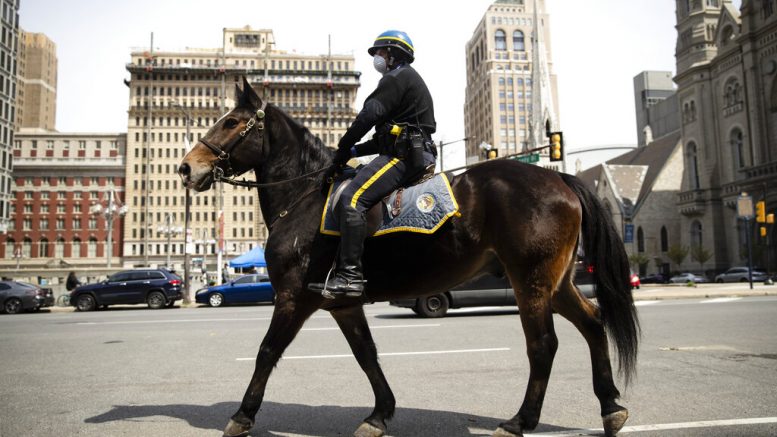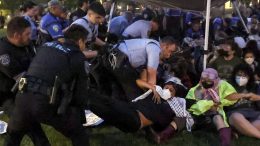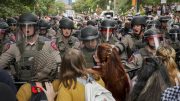HARRISBURG (AP) — Pennsylvania has managed to avoid the worst of the pandemic and it’s now time to start talking about a gradual reopening of the state’s battered economy, Gov. Tom Wolf said Friday as he offered a set of guiding principles, but few specifics, on how he plans to get legions of unemployed residents out of their homes and back to work.
Cautioning that serious obstacles remain, Wolf said he would rely on an “evidence-based, regional approach” guided by health experts and economists that will help him decide when it’s safe.
The plan released by his administration offered no timetable. It also did not spell out the metrics that Wolf and his administration will use to decide that Pennsylvania can begin emerging from the pandemic after weeks of social distancing.
Wolf called Friday’s release a “framework” and said he would lay out more concrete steps next week. The state needs to be careful and deliberate in reopening the economy, the governor said, with the flexibility to respond to new outbreaks. Doing otherwise, he contended, would prolong the crisis.
“There is no magic wand to wave to get us back to where we want to be,” said Wolf, unveiling his “Relief, Reopening, Recovery” plan at a video news conference Friday afternoon.
The Democratic governor has imposed a series of progressively tougher measures in the face of a pandemic that state officials say threatened to swamp hospitals and spike the death toll. COVID-19 has sickened nearly 30,000 Pennsylvania residents and killed more than 750.
Wolf shut down businesses deemed “non-life-sustaining,” closed schools through the end of the academic year and ordered all 12.8 million Pennsylvania residents to stay at home unless absolutely necessary. Just this week, the Wolf administration ordered people to wear masks inside supermarkets, pharmacies and other stores.
State health officials have said the restrictions have worked to slow the rate of infections and prevent hospitals from running out of bed space, ventilators and other supplies. Pennsylvania has avoided the explosive growth in coronavirus cases seen in places like New York and Italy, though it is still reporting over 1,000 new infections and dozens of deaths every day.
The pandemic and the state’s efforts to contain it have caused economic devastation, throwing almost 1.5 million Pennsylvania residents out of work, or nearly one in four workers. Wolf has been under increasing pressure from Republicans, trade associations and business owners to relax the restrictions. Protesters plan to gather Monday in Harrisburg to demonstrate against the shutdown.
Under Wolf’s plan, employers and other organizations that are permitted to reopen will be required to follow guidance from the state Department of Health and other state agencies, and will have to close again if there’s a “significant” COVID-19 outbreak.
Limitations on mass gatherings will remain in place for the duration of the reopening process, according to plan documents. And a “strong testing regime” must be in place in areas that are permitted to reopen, along with a monitoring and surveillance program.
Wolf could not say Friday how much testing is enough, although he pointed to a “national shortage” of testing materials as a significant problem.
Wolf’s plan comes a day after President Donald Trump, pressing to restart the ravaged U.S. economy, gave governors a road map for economic recovery.
The White House guidance said that states should see a “downward trajectory” of documented cases over a 14-day period, although Wolf’s plan does not mention the two-week metric.
Wolf acknowledged Trump’s guidance to the states, but said he wanted to have a plan that “respects the reality” on the ground in Pennsylvania.
“Unfortunately, we cannot flip a switch and reopen the commonwealth. There’s not going to be one big day,” he said. “We need to be smart and make data-driven decisions.”
In other coronavirus-related developments in Pennsylvania:
NURSING HOME NUMBERS
Even as neighboring New York released a report Friday on the frightful toll at individual nursing homes, Pennsylvania residents remain largely in the dark about how individual long-term care facilities in their state are faring during the pandemic.
Pennsylvania officials recently began allowing the release of some county-specific information on nursing homes. Statewide, the data show that 398 residents have died at more than 300 nursing and personal-care homes — over half the state’s COVID-19 death toll.
But the Department of Health won’t provide facility-specific information. Advocates and some lawmakers say the agency’s reluctance to name names endangers residents, staff and the public at large.
Pennsylvania’s health secretary, Dr. Rachel Levine, insisted the state is sharing plenty of information. “I think we’re being pretty transparent about our challenges with long-term care living facilities,” she said Friday.
UNEMPLOYMENT RISES
Pennsylvania’s unemployment rate zoomed upward in March to its highest point since 2014 as the effects of Wolf’s business shutdown and stay-at-home orders began to be felt, according to figures released Friday.
Pennsylvania’s unemployment rate shot up to 6%, up from 4.7% in February, the state Department of Labor and Industry said. The surveys were conducted before the full force of the shutdowns took effect.
A separate survey of employers showed seasonally adjusted nonfarm payrolls fell by 40,000 in March to below 6.1 million after hitting record levels earlier this year.
Friday’s figures are preliminary and could change.
CASES
The COVID-19 death toll rose by 49 to 756, the state Department of Health reported Friday, with more than 1,700 additional people testing positive for the virus.
Statewide, more than 29,400 people have tested positive, according to the latest statistics. More than half of the people infected are 50 or older, while most of the deaths are among people 65 and older. The department does not have data on the number of people who have recovered.
CASINO REVENUE
Revenues dropped by more than half last month in Pennsylvania’s 12 casinos and other gambling outlets as casinos shut down in an effort to stop the spread of the virus.
The Pennsylvania Gaming Control Board said casinos brought in $153 million from gambling and fantasy sports betting in March, down 52% from $316 million in the same month a year ago.
The casino’s online slot machine games and table games including poker remain active, and revenue crept upward to $24 million from $19.5 million in February.
Online sports wagering also remains active, although bets fell in March to $131 million from $330 million in February as professional and college sports shut down.









































